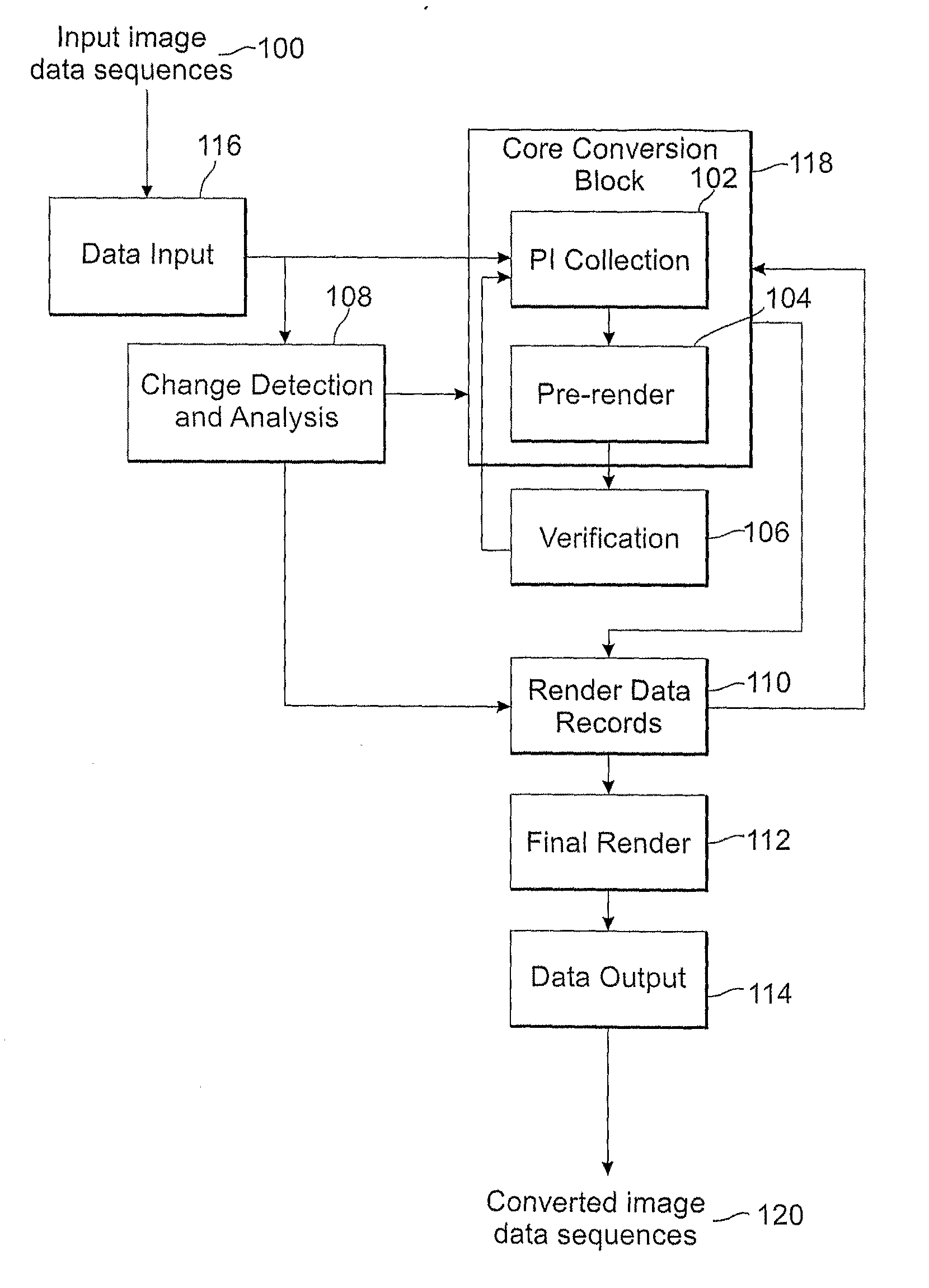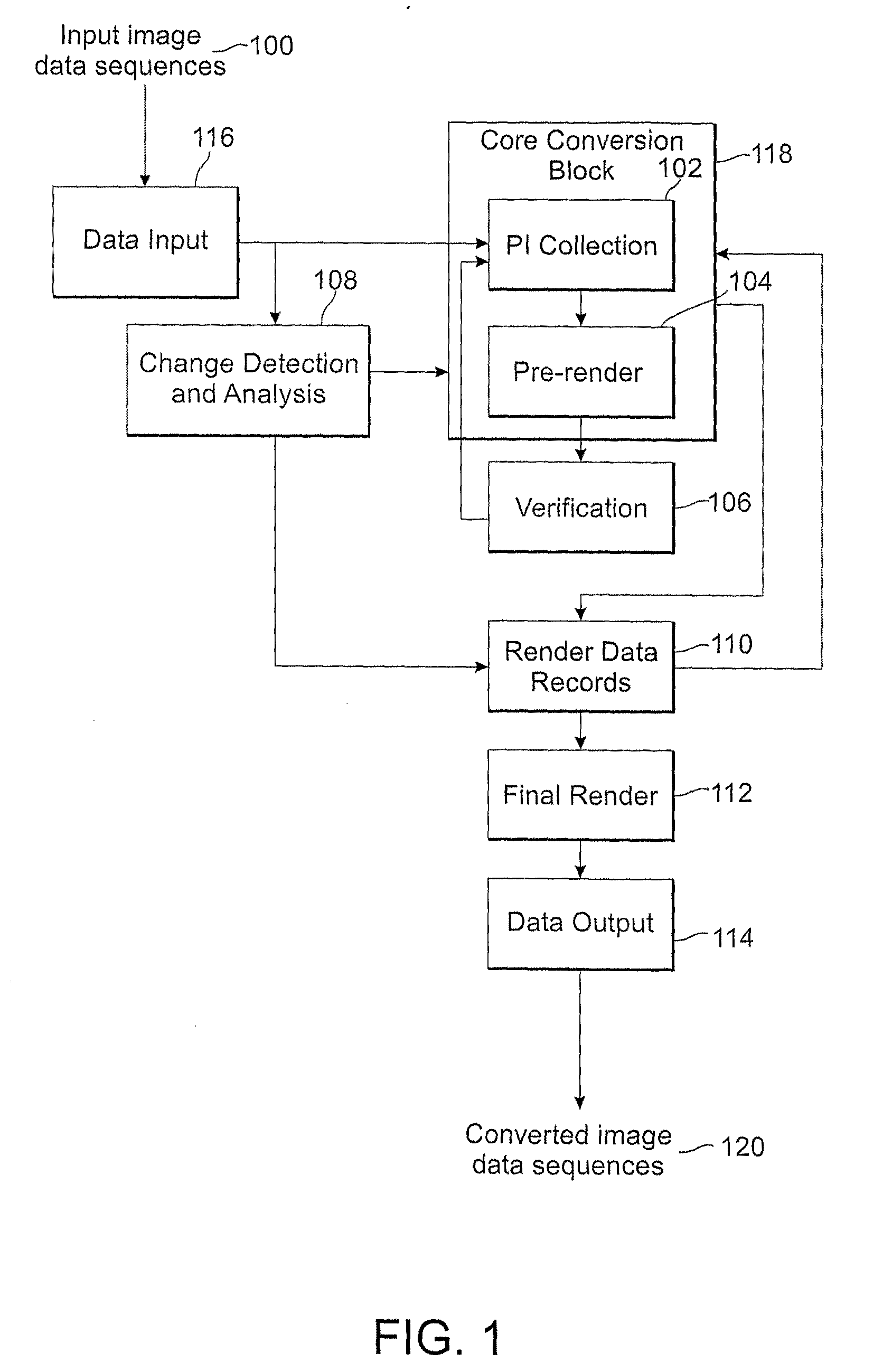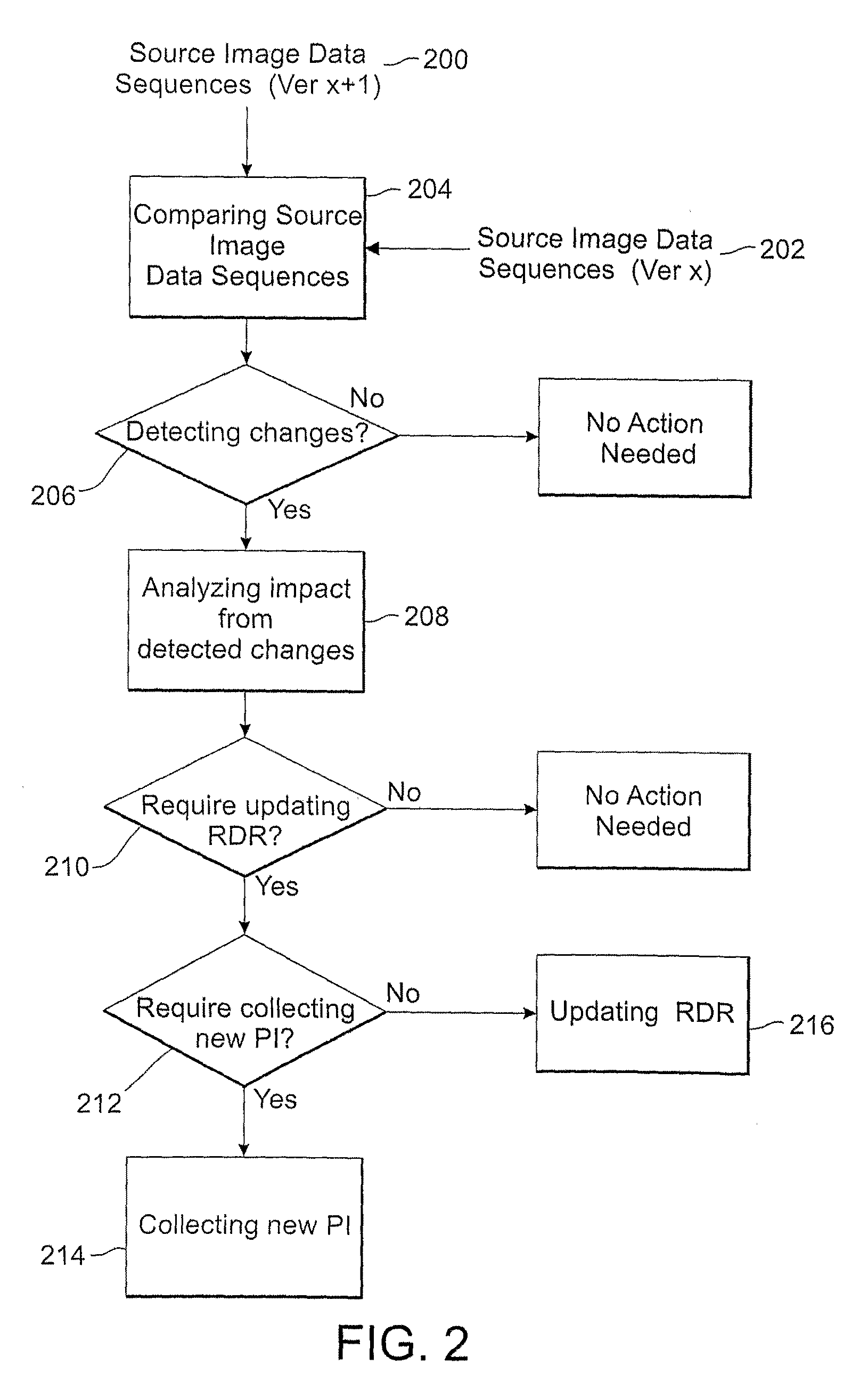Methods and systems for converting 2d motion pictures for stereoscopic 3D exhibition
a technology of stereoscopic 3d and conversion methods, applied in the field of image processing, can solve the problems of difficult operation, large volume of 3d motion picture cameras, and a more expensive and complex process for producing 3d motion pictures, and achieve the effect of enhancing the image quality of motion pictures
- Summary
- Abstract
- Description
- Claims
- Application Information
AI Technical Summary
Benefits of technology
Problems solved by technology
Method used
Image
Examples
Embodiment Construction
[0038]Embodiments of the present invention provide methods and systems for converting 2D motion pictures for stereoscopic 3D exhibitions. Some embodiments may be used to convert a 2D motion picture into a 3D motion picture to be released on the same release date as that for the original 2D motion picture, which is known as a day-and-date release. Generally, a production process of a motion picture includes frequent changes to the contents of the motion picture and the contents are not locked until very close to the release date. Once the contents of the motion picture are locked, a color correction process is applied to the images to achieve the final look intended by the filmmakers. Traditionally, the color correction is done photo-chemically through a process known as “color timing”, and more recently it is performed by digital means that provide much finer controls. The finalized digital version of the motion picture is referred to as a digital intermediate (DI). As a result, the...
PUM
 Login to View More
Login to View More Abstract
Description
Claims
Application Information
 Login to View More
Login to View More - R&D
- Intellectual Property
- Life Sciences
- Materials
- Tech Scout
- Unparalleled Data Quality
- Higher Quality Content
- 60% Fewer Hallucinations
Browse by: Latest US Patents, China's latest patents, Technical Efficacy Thesaurus, Application Domain, Technology Topic, Popular Technical Reports.
© 2025 PatSnap. All rights reserved.Legal|Privacy policy|Modern Slavery Act Transparency Statement|Sitemap|About US| Contact US: help@patsnap.com



